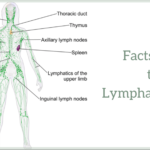The role of Nickel in the human body is described in detail in this post. Nickel is a silver-white metal that can be found in soil, water, and foods, including almonds, dried beans, and chocolate. The body requires only trace levels of Nickel.
Nickel is required for some chemical activities in the body. Its particular roles within the body are unknown. Nickel is a trace element that is commonly found in vitamin supplements.
Nickel deficiency is caused when there is not enough nickel in the blood. So, people use Nickel to prevent Nickel insufficiency. Taking a supplement with small amounts of Nickel is an effective way to avoid deficiency of Nickel. It is also used to treat anaemia, a lack of healthy red blood cells caused by a lack of iron, osteoporosis, and other illnesses, even though there is no solid scientific data to back up these uses.
Metabolism and absorption of Nickel
Nickel goes to every organ in the body when it is consumed, but most of it goes to the bone, kidney, and lungs. If nickel penetrates the body via polluted air, it is retained in the lungs. When nickel enters the bloodstream, it is expelled through the urine, and when it gets through food, it is excreted through the faeces. So, the role of Nickel in the human body is tricky.
The main way to get rid of nickel that has been taken in is through urine. Nickel that is eaten but not absorbed by the digestive system is mainly found in faeces. Gender, age, or pregnancy have no discernible effects on the standard range of nickel levels in bodily fluids or tissues such as blood, serum, lung, or kidney. Ni2+ accumulated more in the spinal cord after oral treatment than in the frontal cortex or cerebellum.
Nickel is not well absorbed from the digestive system. However, most of the absorption of nickel and nickel compounds comes from dietary consumption and exposure to drinking water. Some people are allergic to nickel-containing foods.
Physiological and Biochemical Functions of Nickel
The biological role of Nickel is not so clear. Nickel is primarily found in the body’s nucleic acids, especially RNA, and is assumed to play a role in either protein construction or function. Ribonucleic acid, or RNA, is a nucleic acid found in all living cells. It has similar properties to DNA. But, unlike DNA, RNA often only has one strand. The backbone of an RNA molecule is made up of alternating phosphate groups and sugar ribose. This is different from the backbone of DNA, which is made up of deoxyribose.
It might cause some glucose consumption or breakdown-related enzymes to become active. Nickel may contribute to the synthesis of prolactin and hence play a role in the production of human breast milk. Nickel helps the body absorb iron. It promotes the metabolism of glucose and adrenaline. It benefits lipids, cell membranes, and hormones. It strengthens bones and may also help with red blood cell synthesis.
Our bodies’ RNA and DNA include nickel, which serves a purpose in conjunction with nucleic acids. It probably plays a part in keeping the RNA structure stable.
Nickel insufficiency and recommended daily intake
Nickel shortage is uncommon because it is only a trace element. But it has been shown that some people develop specific liver and kidney problems as a result of having low nickel levels in their systems. So, the role of Nickel is vital to the human body.
Low nickel concentrations in chicks and other small animals can cause stunted growth, pigment changes, decreased reproductive ability, dermatitis, and impaired liver function.
Nickel losses in people can result from increased sweating, such as those brought on by exercise. It may need additional dietary nickel to continue performing its as-yet-unknown role.
Typically, supplements containing nickel sulphate and nickel chloride are used. Acu-Cell Technology published RDAs for nickel for various age groups in 2016. RDA means Recommended Dietary Allowances. μg is one million micrograms in one gram.
- RDA is 100–300 μg /day for children aged 1–10, including males and females.
- 400–600 μg /day for males aged 11–18.
- 300–500 μg /day for females aged 11–18.
- 500–700 μg /day for males over 19 years old.
- 400–600 μg /day for females over 19 years old.



